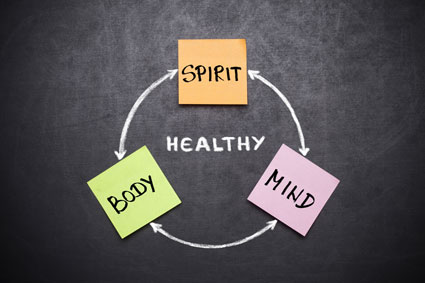Understanding Flow in Conversation
Flow in a conversation is the idea that as you are speaking with another person, everything feels effortless. With flow in a conversation, you often experience no sense of anxiety or awkwardness; you do not feel stuck at any point; you are able to respond and listen to and with the other person as if the conversation were a well choreographed dance. However, every singe conversation is unique, with multiple variables that play into how you feel as you communicate with the other person. Therefore, flow can seem difficult to achieve; however, like many of the conversational skills, with practice, you can become very skillful at creating flow in most conversations.
The key ingredient to creating flow is feeling effortless. With some people, we simply click with their way of being and manner of communicating. In these cases, we leave the conversation feeling like we really connected with someone through the sharing of information or in personal situation, emotions. It is these very situations that act as our models as we work to gain self-awareness as to how we can create flow in any conversation. The first step is to think about a person you had immediate flow with; you did not have to work to get the conversation going; it simply took off, and you were not even conscious of how you were coming up with the words you chose or questions you asked. Once you have a person in mind, follow some steps to break down what made for the flow with this conversation. Ask yourself; what were the characteristics of this person? Who initiated the conversation? What did I say during the conversation? What did the other person say during the conversation? What were the details of this conversation; duration, timing, setting, background story? Duration is defined as the length of the conversation. Timing is defined as when the conversation was held; what time of day, time of year, was it at a holiday party or in the workplace (these matter as they provide clues to how you might naturally create flow). Setting is defined as the place the conversation occurred. Background story involves any prior information you had about the person, or was this person a total stranger? Each of these questions will paint a greater picture about the unique context of this conversation and this person in order to understand why you were able to achieve ideal flow in the conversation.
It may seem like a lot of effort to breakdown and analyze a conversation in this manner; however, this practice can help you develop great insight into your natural ability to create flow in conversation. Alternatively, the next step in this practice is to then think of a situation and person you had the most uncomfortable conversation with. In other words, you were unable to get any sort of conversational flow going. Ask yourself the same questions as you did for the ideal example of conversational flow. One helpful approach is to perform these two exercises by writing side by side on a piece of paper. Once you finish, compare the two situations. Do you notice any themes? It can be helpful to write down the immediate thoughts that come to mind after this practice before you have a chance to over think or over analyze the details you came up with. Often times, after performing some sort of exercise in gaining self insight, it is a useful practice to immediately write down what struck you or what you can't stop thinking about, as these are often great avenues into your own styles of operating. Over time, however, our brain begins to pull in other information and our initial insights can become tainted and confusing. So utilize that time after this exercise to glean some immediate insights.
Once you have some greater self awareness into your own experiences with establishing conversational flow or lack thereof, it is useful to consider the components that impact the flow of any conversations. While there are no two conversational contexts that are the same, there are some general aspects to conversational flow that you can work on in order to improve your ability to create such flow in any sort of conversation.
If you remember one thing about creating flow, your fall back should be "keep the person talking." Now it is true that the other person could talk too much, in which case you struggle to interject, which does not allow for balanced flow of conversation. However, a helpful tool in the most awkward of conversations, in which you feel as though you'll never get the flow going, is to simply get the person talking. This can be done by inviting the other person in to talk. Think about when you become most talkative; it is often when the topic is something you care about or something you are passionate about. Even if the person is a complete stranger, through your use of skillful questioning, you can pick up on what seems important to this person. This is vital information because if in the situation you feel a lack of conversational flow, you can use what is important to that person to stimulate the conversation. Some clues for you that a topic is important to a person include; intonation or increased use of expression in the voice, consistent reference to that topic, or an expression of emotion whether verbally or through facial expressions. File these topics of importance in your mind and as you move through your conversation bring up these topics through a question. This invites the person to keep talking, while also demonstrating your listening and care.
This idea of care brings up the next important point of creating or maintaining conversational flow; you must care about that person for the small amount of time you are talking with them. If human beings are honest with themselves, this is not always easy. There are people we simply do not connect with; we get a bad impression; you may be sensitive to a certain topic that the person offends you with. However, the more you can find a reason to care about that person for the brief time you are talking with them, the better off you will be in creating conversational flow. It is hard to care about what is important to another person if you do not connect with them, and it is often these very conversations we find ourselves unable to create any sort of conversational flow. If you sense yourself feeling this way, perform some self talk. Ask yourself, "why don't I like this person right now?" "Is this more me than them?" These questions will work to keep you open minded in the conversation because the minute you begin to let any feeling of annoyance, disagreement, or defensiveness seep in, you will shut down and the conversation will die. In a professional setting, this can be challenging because the person may be able to offer help on a project or even be a key player in you moving up in your career. So remaining open minded is a vital tool to keeping a conversation alive and trying to establish conversational flow. One very helpful strategy to remain open minded to another person is to try and relate to them on some level. Remember that they have a history and experiences that may contribute to the way they communicate or present themselves, and your very conversation with that person could not only benefit you, but you could have an impact on their own life - professionally and personally.
Relating to the other person and demonstrating care will enhance the level of comfort between you and the person. With some beginning feeling of comfort, flow has a chance to develop. The goal of creating conversational flow should be to create a well balanced conversation, in which the amount you share information or talk about yourself is equal to the amount the other person shares information or talks about him or herself. So be aware of time. Do you notice you are talking for a long period of time? If so, invite the person back in to respond. Inviting a person back into the flow of the conversation involves open ended statements, which often involve questions. For example, if someone asks you, "How did that presentation go?" If you were to reply, "Just fine," the conversation is already ended. If your goal with that person is to have a longer more impactful conversation, then to achieve flow you will want to respond, "It went well, I worked in X and Y, do you think I should follow up with any other information?" This invites the person to respond to you and keeps the conversation alive. It is true that sometimes we will not have the time for this, but if your goal with that person is to connect with them as you build your professional network or work to advance, conversational flow should be something you work to achieve. The more details you respond with, the more the other person can be invited to also respond. It is like you passing him or her the ball in a basketball game. The ball should be moving back and forth with good conversational flow.
In some situations, you may sense the conversation is dying or you are feeling stuck as to what to say next. This is where your fall back strategies of remembering what seems important to the person can come in handy. Returning to an earlier topic can be helpful to keep the conversation flowing. However, transitioning to an earlier point can feel awkward without connecting what was just said with what you are about to say. Using transitional phrases can help with this situation. Provide a conclusion statement to what you just talked about, "I will definitely need to look into that." Follow this with, "and by the way, I hope you can tell me more about X at some point too." The "and by the way" helps trigger that you transitioning in the conversation. Other transitional phrases include statements or questions that begin with "and," "or," along with "you know what else I'm thinking�" The key is to transition without leaving the other person feeling confused about the new topic.
While flow is defined as effortless movement through a conversation, every conversation must come to an end. Having good conversational flow means that you and the other person feel good about ending the conversation and it is left with a sense that something was accomplished through your conversation. Accomplished in the sense that helpful information was shared, a decision was made, or future plans were established. As you flow through a conversation, are you noticing that things are starting to feel redundant? It can be helpful to return to an earlier point or topic in order to maintain flow, but if the same information keeps coming up, it may be that the conversation has served it's purpose. If this is the case, you will want to work to shift to closing the conversation. Closing a conversation can be done by briefly summarizing the main points of the conversation. If it is a professional meeting, "So I will look into�" or "So I will do X and you do Y, and lets meet�" The "So" indicates you are summarizing a point and also you are being clear as to what you will do and what the other person will do as the result of your conversation. Additionally, end the conversation by planning a future conversation. Decide on a day and time, as this will convey to the other person you found this conversation helpful or in a personal setting, enjoyable, and you would like to talk again. Also, trying closing out the conversation with a compliment of appreciation, "I want to thank you for sharing with me your experience with�" or "I really appreciate the information on X." This will reinforce your connection that was established and also end the conversation on a comfortable note, which can help to initiate conversational flow in the future.
Overall, your ability to establish conversational flow will come with a combination of the communication skills, but using some more advanced skills to hone in on certain words or topics the other person is producing to then build off that information. In addition to the skills discussed that will keep the other person talking.























